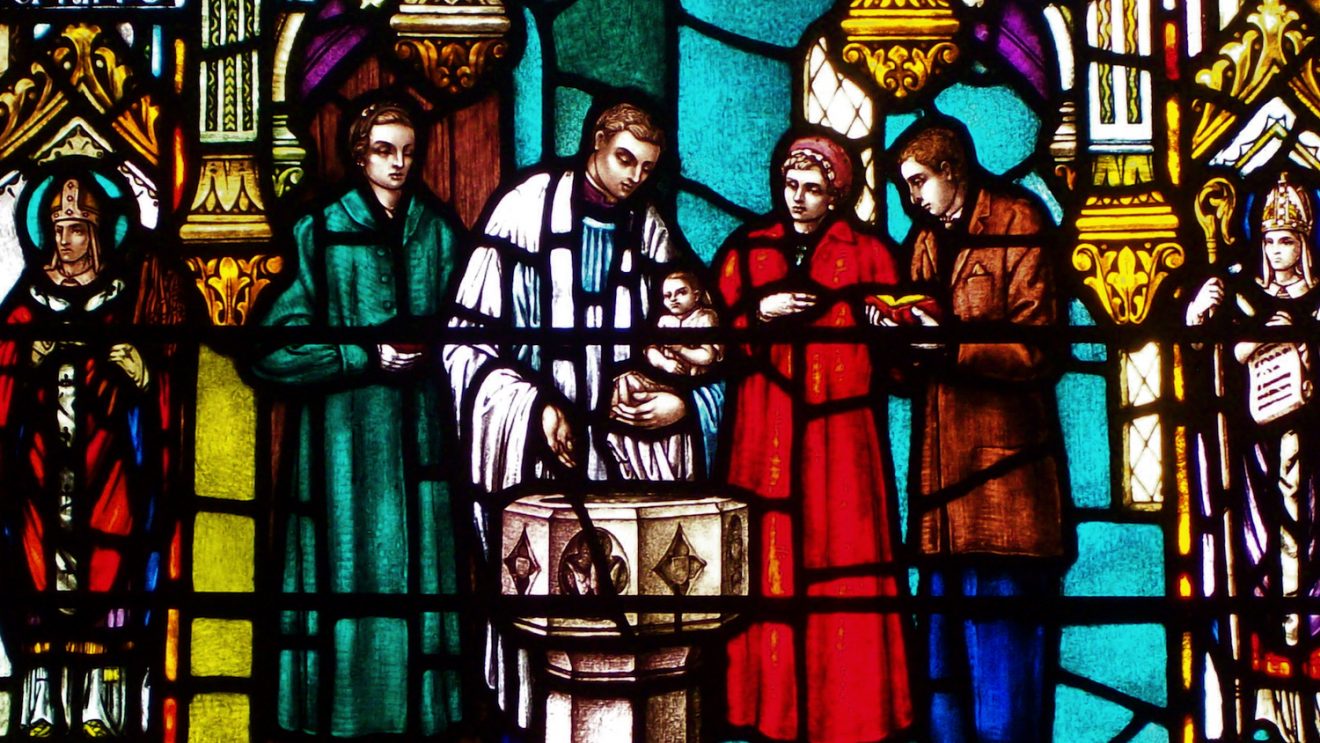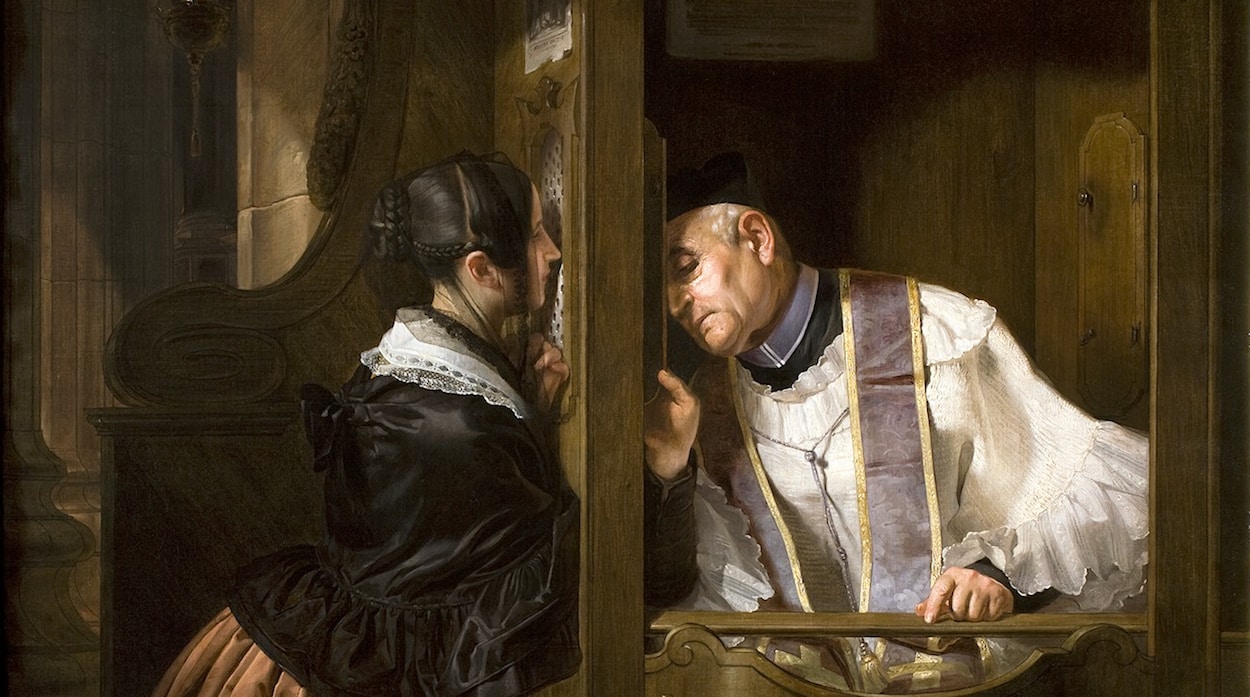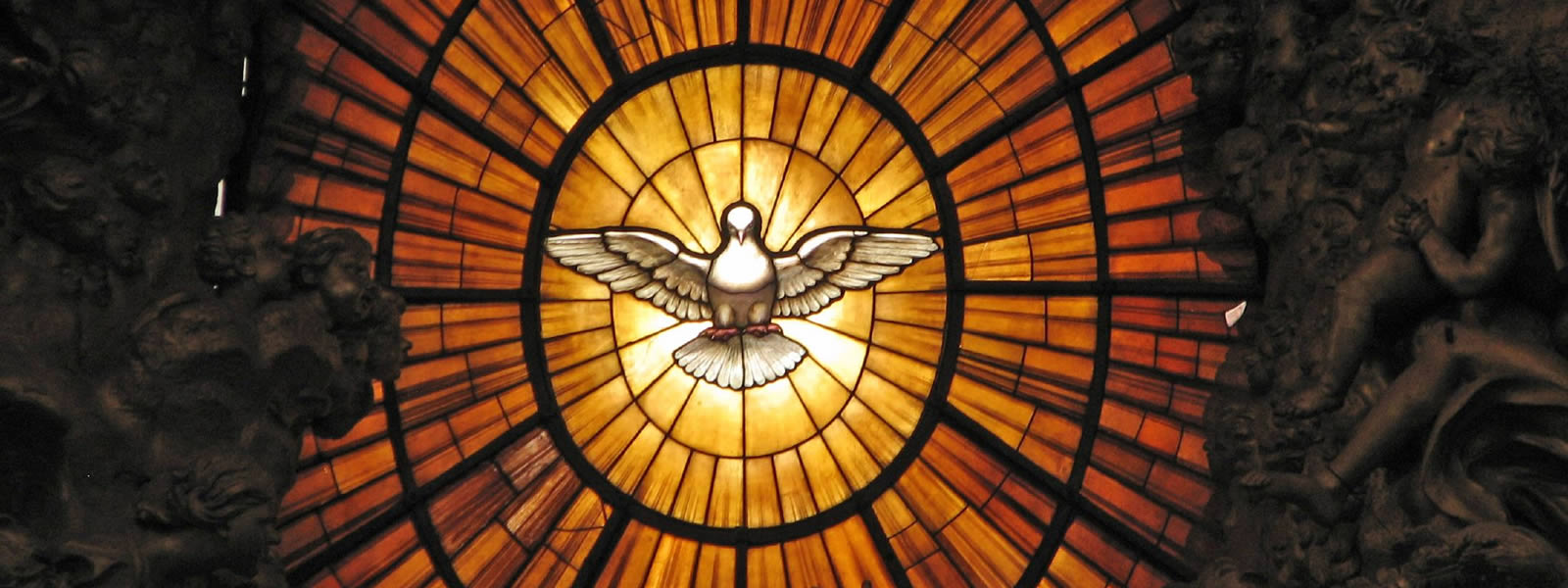Was your baptism valid? The question is not an idle one, as Father Matthew Hood, a young priest in the Archdiocese of Detroit, will attest. After reading a statement on baptism from the Vatican Congregation for the Doctrine of the Faith (VCDF), Father Hood looked into his own baptism performed thirty years earlier, and discovered that it had been invalid. According to the Vatican, every confession he had made to a priest, his confirmation, and his ordination were also invalid. Technically, he was not even a Christian, and neither were any of the babies he had baptized. Similarly, the couples he had married were not married and the sins of the penitents who had made their confessions to him were not absolved.
Father Hood’s superior, Detroit Archbishop Allen Vigneron, explained the Vatican’s ruling as follows: “To say ‘We baptize you in the name of the Father and of the Son and of the Holy Spirit’ does not convey the sacrament of baptism. Rather, ministers must allow Jesus to speak through them and say, ‘I baptize you in the name of the Father and of the Son and of the Holy Spirit.’” (Emphasis added.) Before Matthew Hood could resume his life as a priest, he had to be validly baptized, validly confirmed, and validly ordained.
The cynics will say, “Why didn’t the Church do as it did with homosexuality or birth control—just leave the doctrine untouched and ignore the violations?” Meanwhile, the scrupulous will agonize about their own salvation status. But putting the extremes of cynicism and scrupulosity aside, the Vatican’s ruling raises serious historical and theological questions. Let’s examine several prominent ones.
What is the actual scope of the problem?
How many other priests around the world used the “wrong” baptismal form over the centuries—for example since the Council of Trent of 1545-1563? How many did so even before that in the Dark and Middle Ages when clerical training was less refined and many priests were semi-literate? And what about in the earliest times? Is it possible that on some occasions two of the apostles, going forth to baptize all nations as Jesus had commanded, conducted baptisms together and quite naturally said “We baptize you . . .” rather than “I baptize you?”
It is not at all far-fetched to believe that any of these instances might well have happened. What is far-fetched is to believe that a twentieth century priest in Detroit has been the only priest in all of Catholic history whose baptism did not correspond to the “I baptize you” formula.
How widespread and significant are the consequences of invalid baptism?
However large or small the number of invalid baptisms may have been, according to the VCDF those who received them were never cleansed of Original Sin and technically never saved by Christ’s sacrifice on the cross. Furthermore, the invalidly baptized who later married were invalidly wed, those who instead became priests were invalidly ordained, and those who became bishops were unqualified to ordain others to the priesthood. Moreover, if any of those bishops became cardinals or pontiffs, their pronouncements, decrees, and bulls—whether delivered ex cathedra or not—were as null and void as Father Hood’s baptism was.
The implications of the latter situation for the authority of the Church are stunning. To appreciate them, we need only recall the Catholic Church’s historic firmness in dealing with the Anglican Church. To cite but one example, in 1896 Pope Leo XIII published Apostolicae Curae, which claimed all Anglican ordinations were “absolutely null and utterly void” because the apostolic succession of ordination had been broken. As a consequence, in Leo’s papal judgment, Anglican bishops could not validly ordain priests; nor could those priests administer valid sacraments to their congregations.
Though the circumstances between the Anglican question and the present Catholic situation with Fr. Hood are different, the underlying question is identical—can anyone who is not validly ordained administer the sacraments validly? And Rome’s answer in both cases has been the same: Definitely not!
What problem(s) does the issue of invalid baptism cause for the Church?
The most serious problem is this: If the Church’s declaration in the case of Father Hood is applicable to all baptisms from the time of the Apostles to the present, as the Vatican clearly implies it is, then even a small number of invalid baptisms per century would have produced, over 20 centuries, hundreds or even thousands of “absolutely null and utterly void” elevations to the Catholic hierarchy. And that would mean that the doctrines established by those prelates—including ones classified as “infallible”—would be invalidated.
To make the situation immeasurably worse, the hierarchy have no way of determining which prelates over the centuries were invalidly ordained and which doctrines are invalid. This lack of knowledge would significantly reduce the Church’s credibility and thus make it difficult to carry out the mission Christ assigned it.
Is there another solution than the one embraced by the Vatican?
The “invalid baptism” dilemma I have described appears to be unsolvable because the form of baptizing is considered fixed and unchangeable, and any alteration of it necessarily invalidates the sacrament. In order for the dilemma to be overcome, a theologically sound argument must be made for variation in the form of baptism. In fact, two such arguments can be made.
The first argument is that if one has not been validly baptized by water, baptism by desire can be received by living one’s life in love of Christ.
As the Catholic Encyclopedia explains, “Baptism of desire is a perfect contrition of heart, and every act of perfect charity or pure love of God which [sic] contains, at least implicitly, a desire of baptism.” It continues, “The efficacy of this baptism of desire to supply the place of the baptism of water, as to its principal effect, is proved from the words of Christ [in John 14].” In addition, The Council of Trent, “in speaking of the necessity of baptism [said that] men can not obtain original justice ‘except by the washing of regeneration or its desire.’” The emphasis I have given the word “or” underscores Trent’s acknowledgment that desire for baptism can be a valid substitute for baptism by water.
The second, even stronger argument is that there is a theological basis for regarding the phrase “We baptize” as valid.
In the case of Father Hood, the VCDF stated that “’We baptize you in the name of the Father and of the Son and of the Holy Spirit’ does not convey the Sacrament of baptism. Rather, ministers are to allow Jesus to speak through them and say, “I baptize you in the name of the Father and of the Son and of the Holy Spirit.” [Emphasis added]
The clear meaning of this statement is that Jesus is unable to “speak through” more than one person at a time. That idea presumptuously ignores the perfect nature of God. It is also linguistically mistaken. The plural form “we” includes the singular “I”; in fact, it is impossible to use “we” in a way that excludes “I.” The deacon who baptized infant Father Hood more than likely intended his “We” to mean the following: “I, and your parents, and this congregation, baptize thee in the name of the Father, and the Son, and the Holy Spirit.” And that meaning is perfectly consistent with the idea of Jesus administering the sacrament through their proxy.
More importantly, theological precedent supports linguistics in this case. In Exultate Deo, Pope Eugene IV (1431-1447) declared that the official Catholic form of baptism is “I baptize thee in the name of the Father and of the Son and of the Holy Ghost.” But he then added, “We do not, however, deny that the words: ‘Let this servant of Christ be baptized in the name of the Father and of the Son and of the Holy Ghost’ . . . constitute true baptism; because since the principal cause from which baptism has its efficacy is the Holy Trinity, and the instrumental cause is the minister who confers the sacrament exteriorly, then if the act exercised by the minister be expressed, together with the invocation of the Holy Trinity, the sacrament is perfected.” [Emphasis added]
Note that the alternative phrasing Eugene approved, “Let this servant of Christ be baptized,” is in the passive voice rather than the active voice. In other words, the phrasing includes NO MENTION, EITHER SINGULAR OR PLURAL, of the person(s) administering the sacrament. Even so, Eugene declared this baptism form valid. Note, too, that he explained his position further, declaring that the validity (“efficacy”) comes primarily from the Holy Trinity, so all that is necessary for the sacrament to be “perfected” is a) that the act of baptism “be expressed” and b) that there be “an invocation of the Holy Trinity.”
I submit that, taken together, the above arguments supporting the validity of Father Hood’s first baptism are compelling. Whether the Vatican Congregation for the Doctrine of the Faith (VCDF) or Pope Francis gave consideration to the Church’s teaching on baptism by desire and Pope Eugene’s statement about baptism in Exultate Deo is not clear. What is clear is that the statement on baptism, which Pope Francis reportedly approved and ordered to be published, makes no mention of either,
Like their neighbors of other faiths, the world’s 1.2 billion Catholics are experiencing anxiety not only over COVID-19’s continuing threat to human health, but also over the threats to democracy, the rule of law, and religion posed by anarchists and the Atheism, Socialism, and Communism that drives them. Accordingly, the last thing the faithful need is another crisis, real or imagined. Yet that is precisely what the VCDF has given them, unnecessarily and therefore imprudently!
What else could VCDF have done? Instead of issuing a public statement to be reported around the world, causing confusion and anxiety, the VCDF should have privately reminded bishops and seminary faculties that the preferred form of baptism is “I baptize . . . ,” but that that the forms “We baptize . . .” and “Let this servant of Christ be baptized,” as well as similar forms, are also valid provided that, as Pope Eugene IV specified, they both express the act of baptism and invoke the Holy Trinity.
If the VCDF had taken this approach, they would have reinforced true Catholic Doctrine; freed Father Hood and others from the requirement of re-baptism, re-confirmation, and re-ordination; spared 1.2 Catholics around the world considerable anxiety; and preserved the credibility of the Catholic Church in a world that desperately needs the Gospel message.
The good news is that VCDF’s mistake can be corrected. By taking the actions specified above, the Magisterium can undo a large measure of the damage that has been done and enhance their own credibility. All it will take is a small measure of courage and a large one of humility. May the Holy Spirit guide them in this matter.
Copyright © 2020 by Vincent Ryan Ruggiero. All rights reserved








